How to Make a Wood Carved Bird Feeder
by The ultimate DIYer in Outside > Birding
842 Views, 2 Favorites, 0 Comments
How to Make a Wood Carved Bird Feeder



My garden has been missing a natural-looking bird feeder for a while, so I decided to carve a log with a wood spirit's (also known as an old man of the woods) face, and have bird seed in the mouth. It will have a perch below the mouth for the birds to stand on while feeding.
Some wood carving terminology I will be using:
A Carving burr - This is the bit that goes in the end of your rotary tool, that actually carves away the wood. There are lots of different brands, but I recommend Kutzall burrs.
Feathering away - This means if you have cut a valley in the wood, you smooth out the transition from the valley to flat wood.
Tools + Supplies
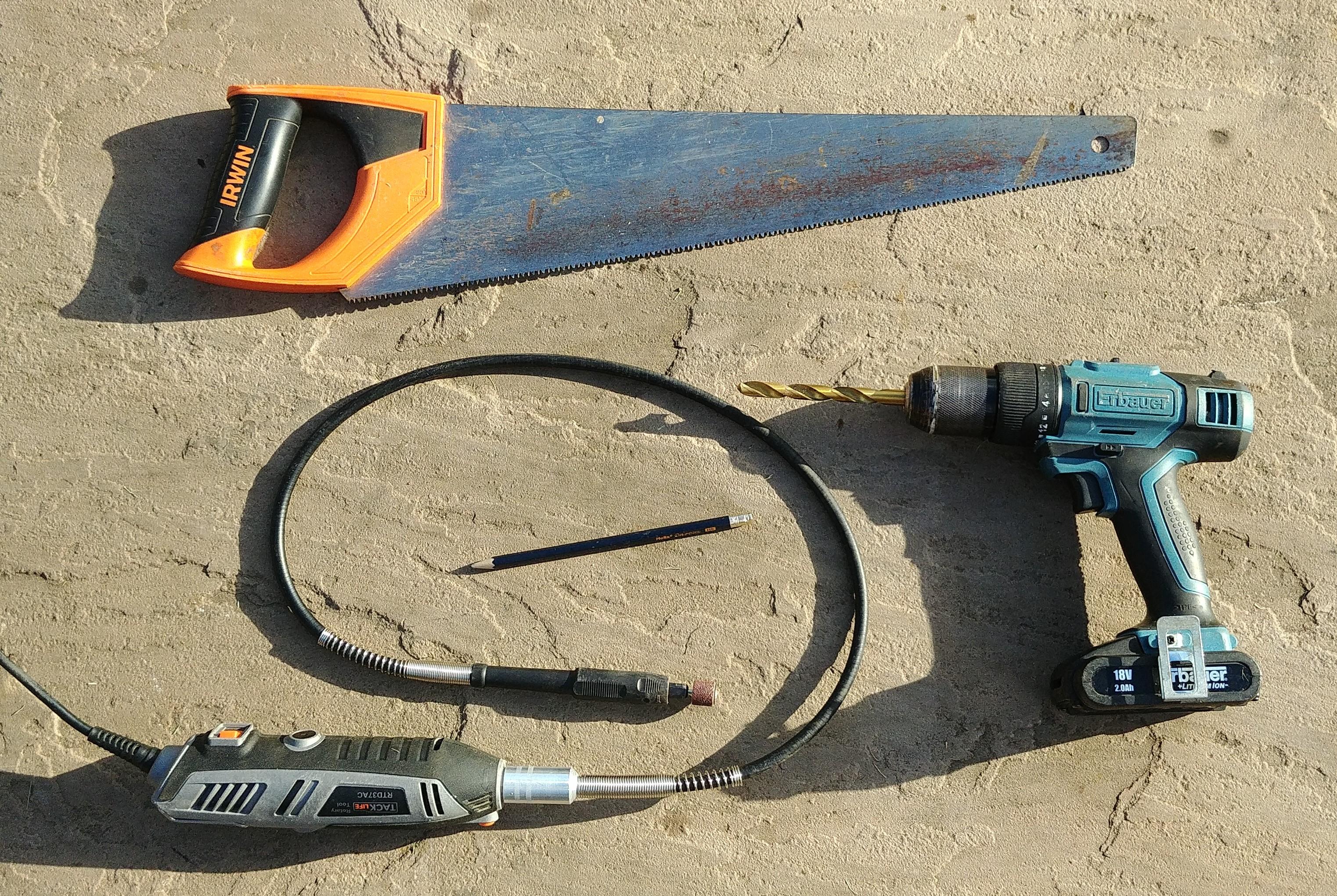.jpg)
Tools:
- A rotary tool, sometimes known as a Dremel.
- Carving bits/burrs.
- A drill and drill bit.
Other supplies:
- A log or piece of wood.
- A pencil or pen.
- Animal-safe varnish (this is optional, but it makes the finished carving look much more glossy. I did not use varnish because I wanted this carving to look natural).
- Bird food - this can be store bought or home made.
Select a Log and Draw the Base Design

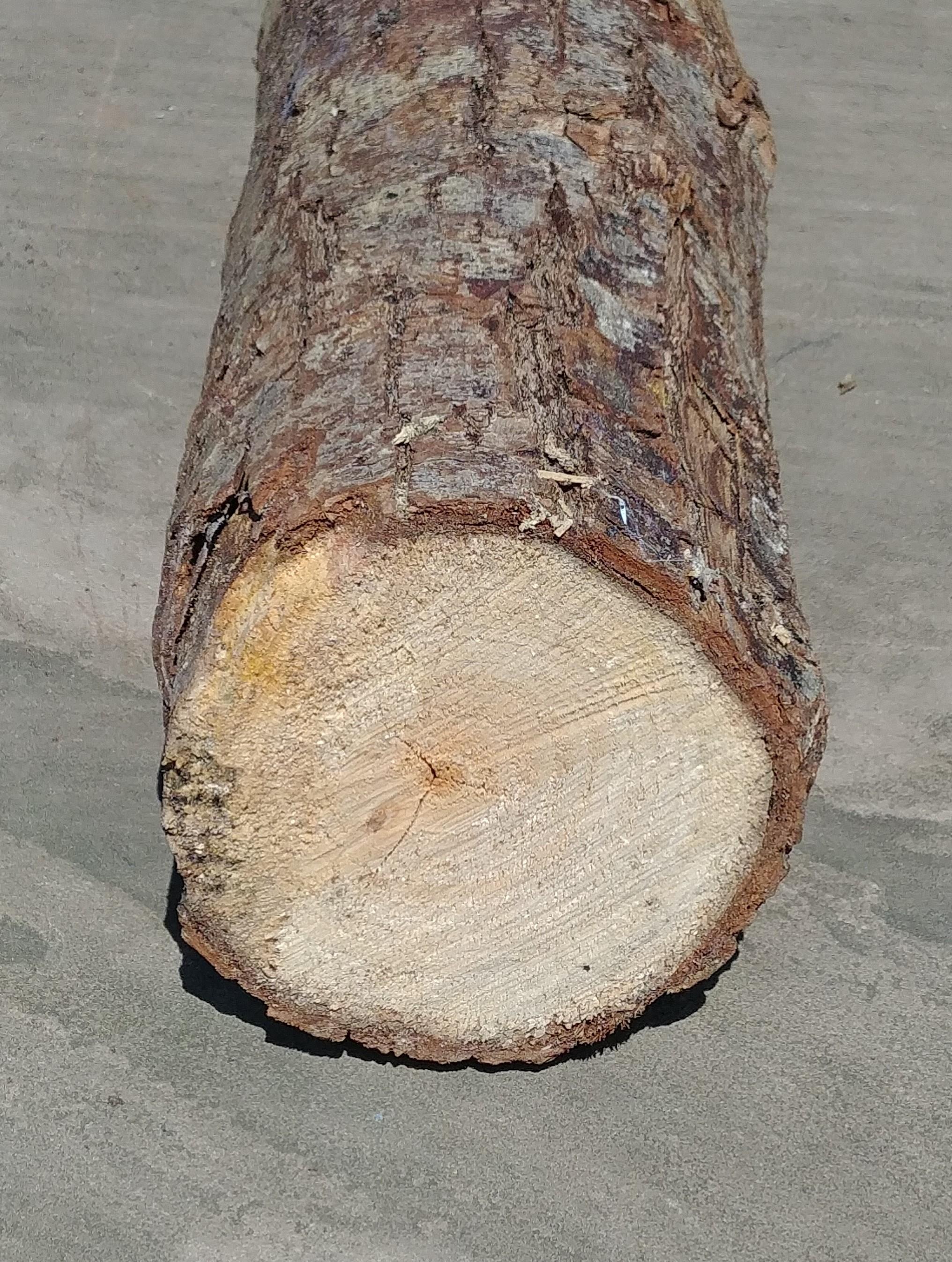.jpg)
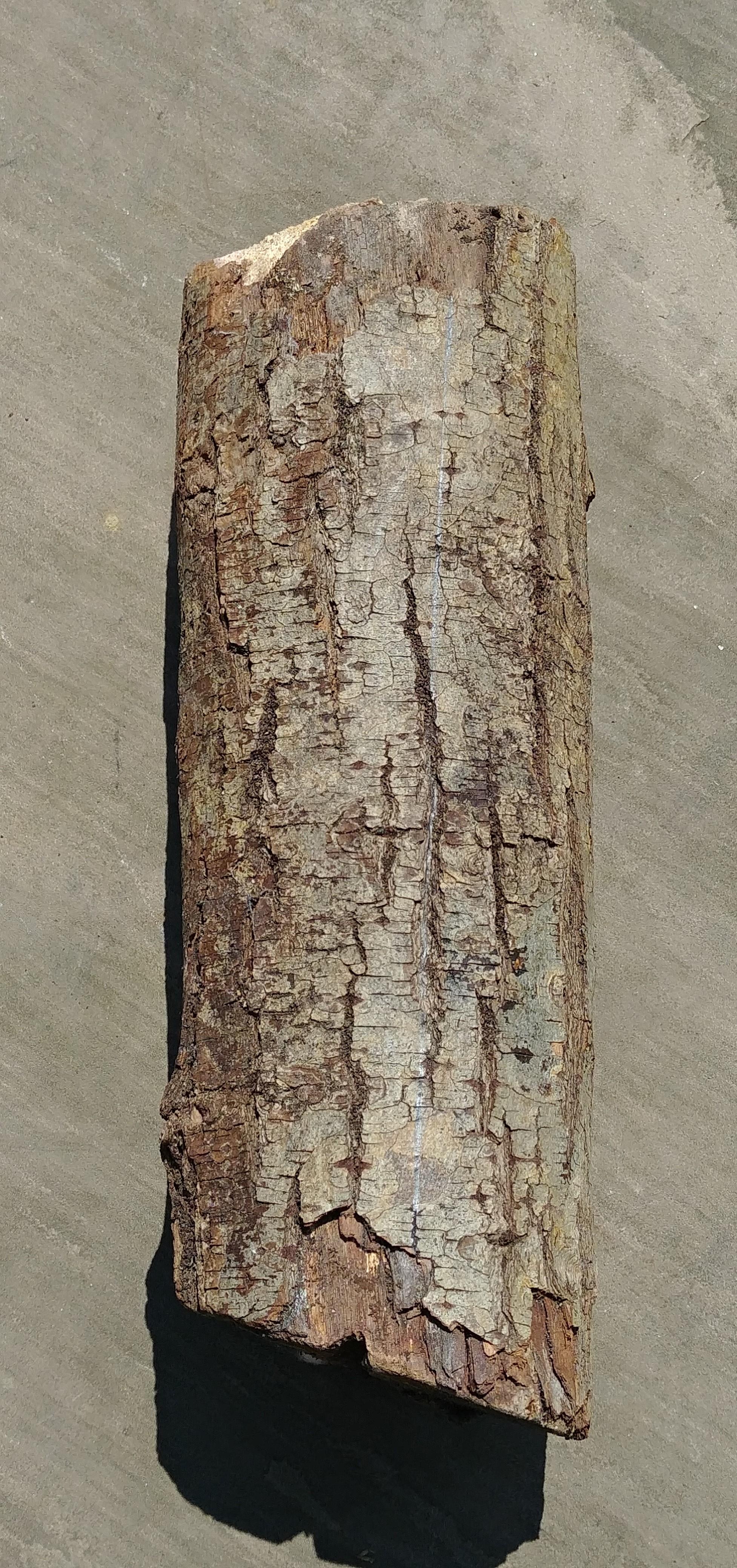.jpg)
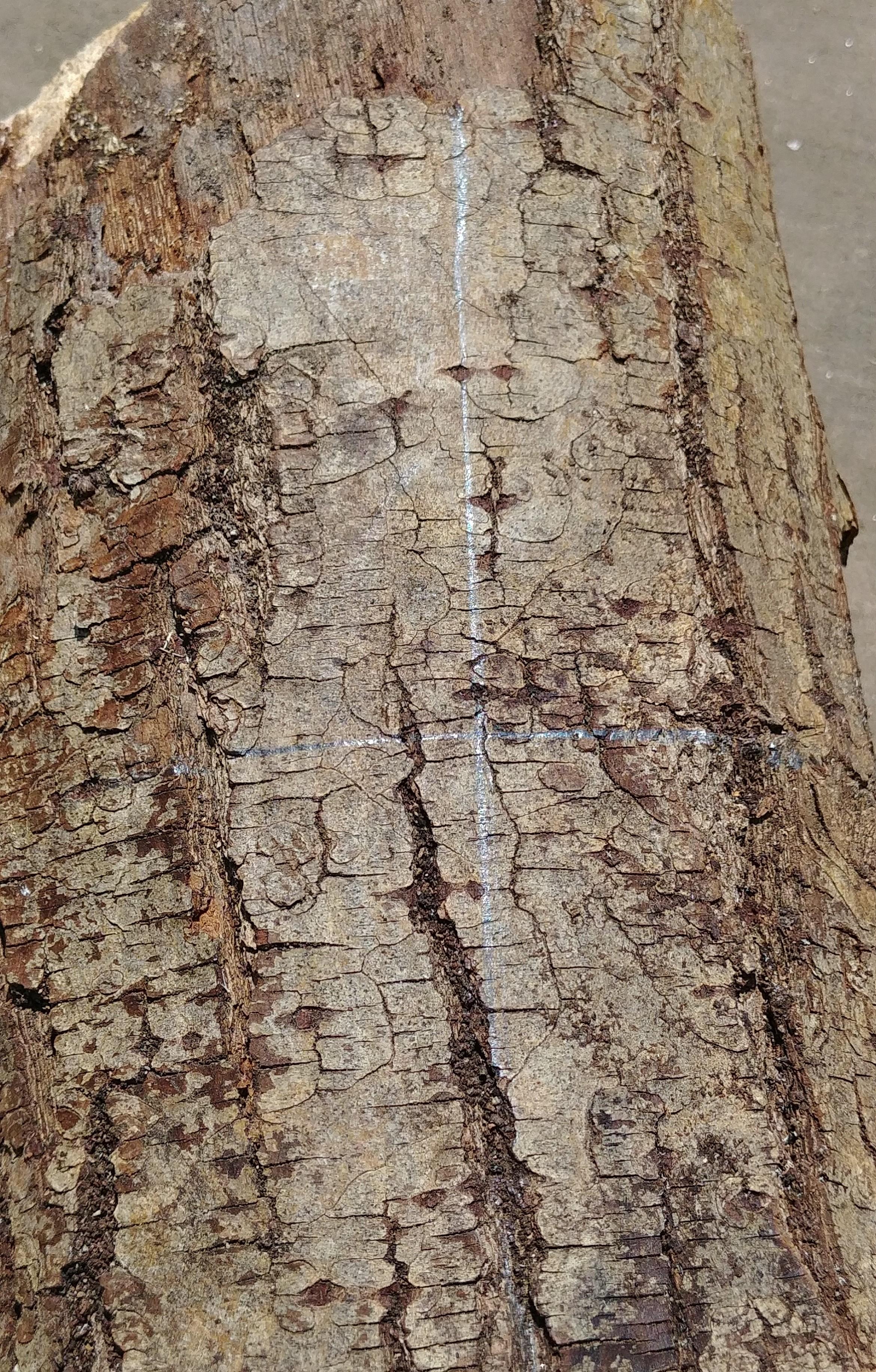.jpg)
I chose this log to carve because it had a cool bark texture and had a small amount of cracks in it.
To start with, draw a line down the middle of the log, where you want the centre of the face to be (the line of symmetry).
Draw a line where the eyebrows will go, the eyes will be underneath this line.
Next draw a line where the base of the nose will be, in the next step we will draw the nose. The eyes will be drawn on later, when the rest of the carving is started, to make it easier to plan out what the eyes are going to look like relative to the whole face.
Drawing the Moustache, Nose and Mouth

.jpg)


.jpg)
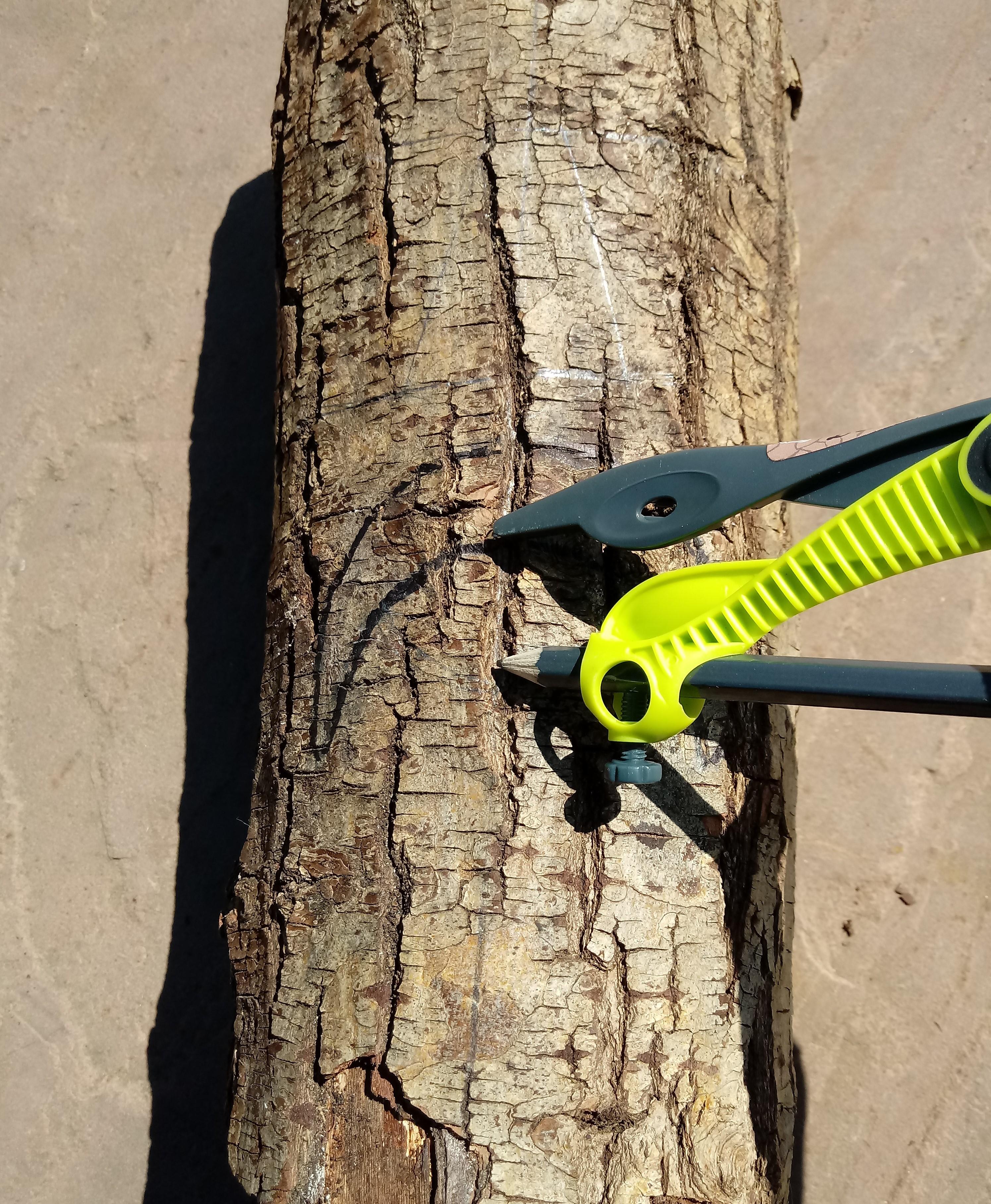.jpg)
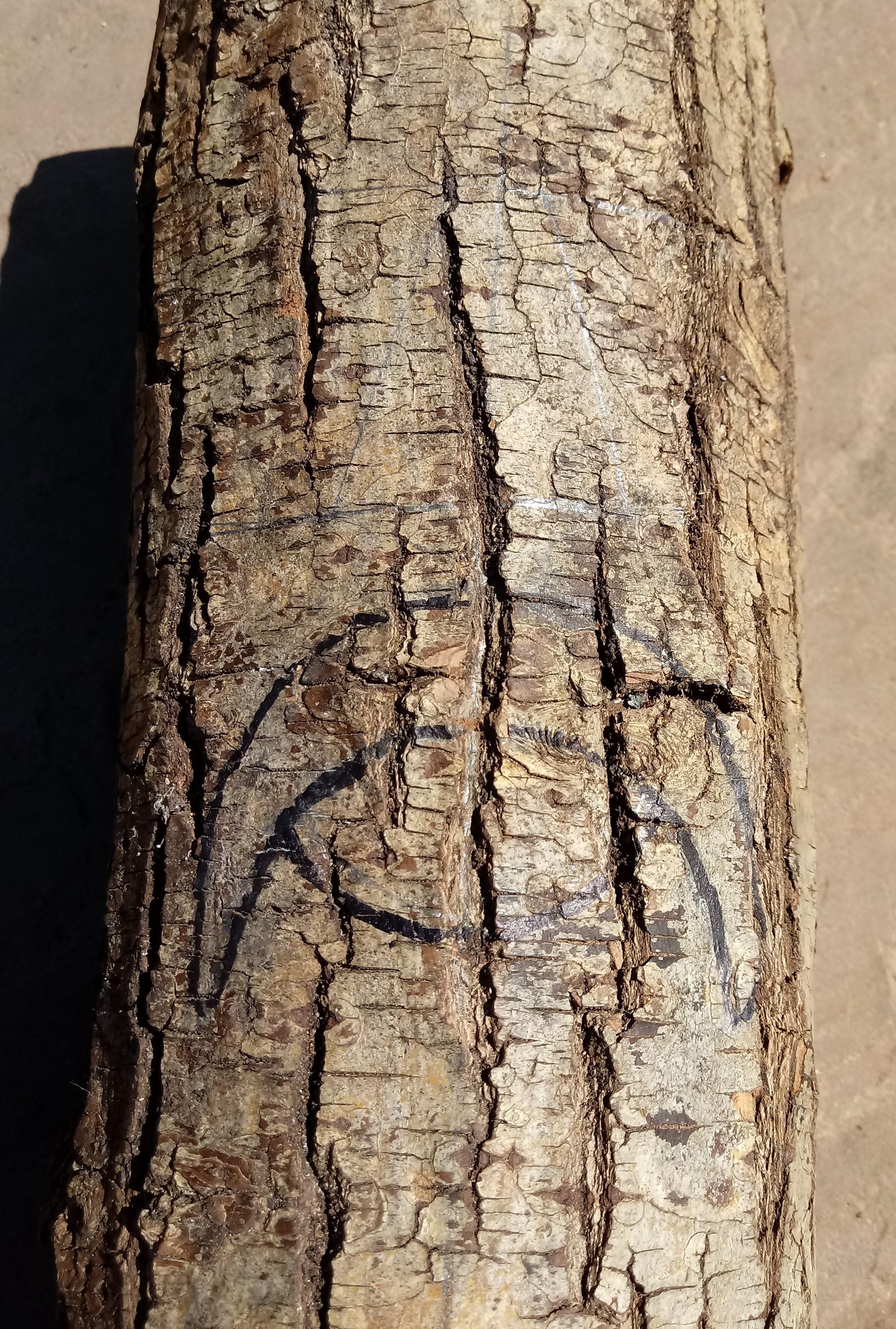.jpg)
.jpg)
Draw the outside of the nose by drawing diagonal lines to create two triangles, one on each side of the nose. Now do the same thing but upside down, joining the lines up with other ones.
For the moustache, draw two sweeping lines, starting from the bottom of the nose and the top of the mouth and joining them up further down the face to create a moustache. Repeat this process for the other side and tweak the lines and change them until they look even. This is why you draw the lines with a pencil, to allow for changes.
If you cannot get the moustache to look even, you can trace one half of the moustache like I did in step 3 of this carving Instructable here: https://www.instructables.com/Wood-Carved-Clock/
To draw the mouth I used a compass, however this is optional and the mouth could be drawn freehand. Remember the mouth is what is holding the food, so do not make it so small that it will not hold any food.
Carving the Outline of the Eyes, Nose and Moustache



.jpg)
To carve the outline of the eyes and nose you carve around the outside of the lines you drew for the nose and carve below the line that you drew for the eyebrows. Then outline the lines you drew for the moustache and mouth.
At the moment you are just carving a valley in the wood, you can take a few passes to get the depth right if you need to, gradually getting deeper and deeper into the wood.
Levelling Out the Wood and Carving Out the Mouth
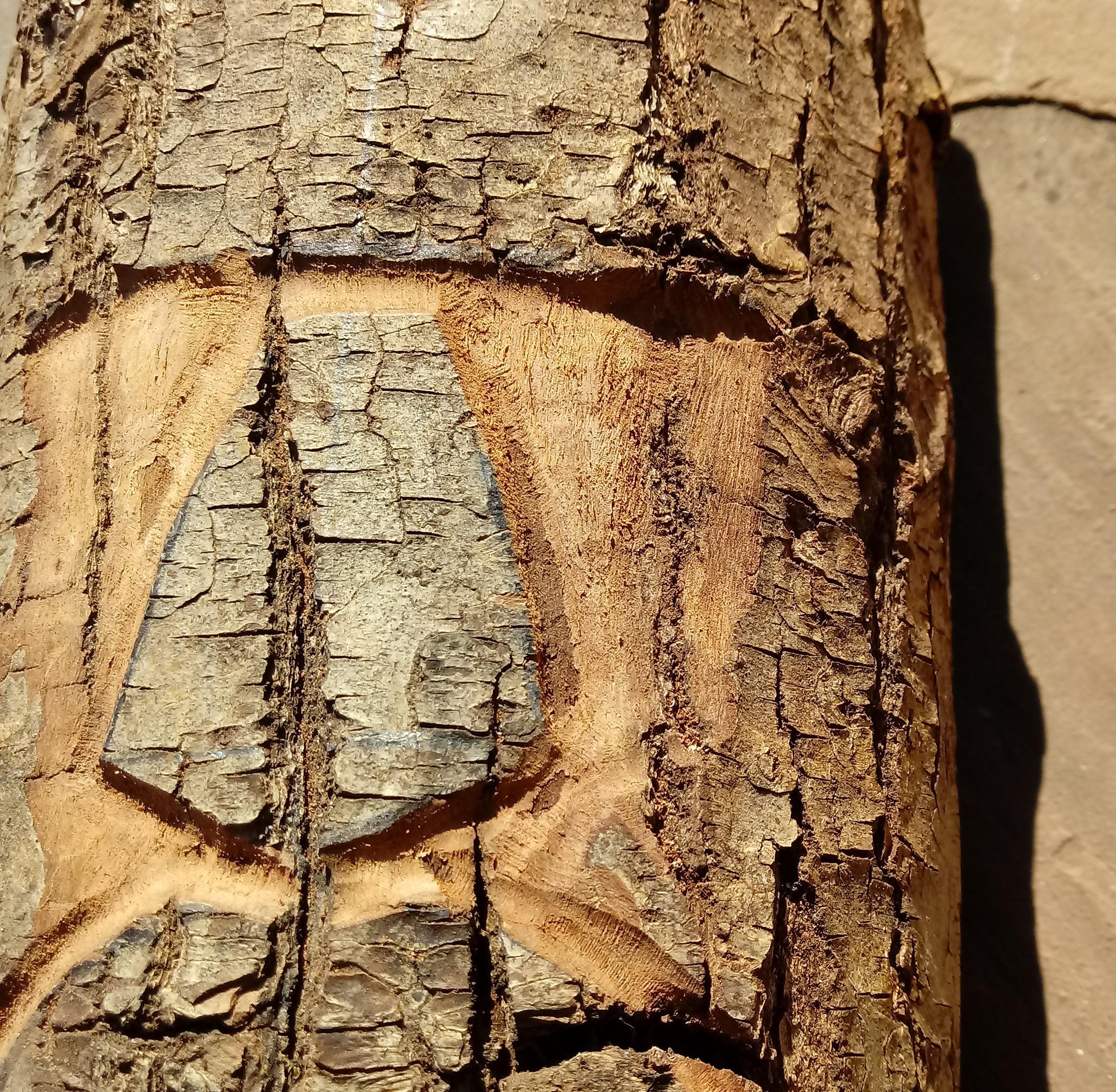.jpg)
.jpg)
.jpg)
.jpg)
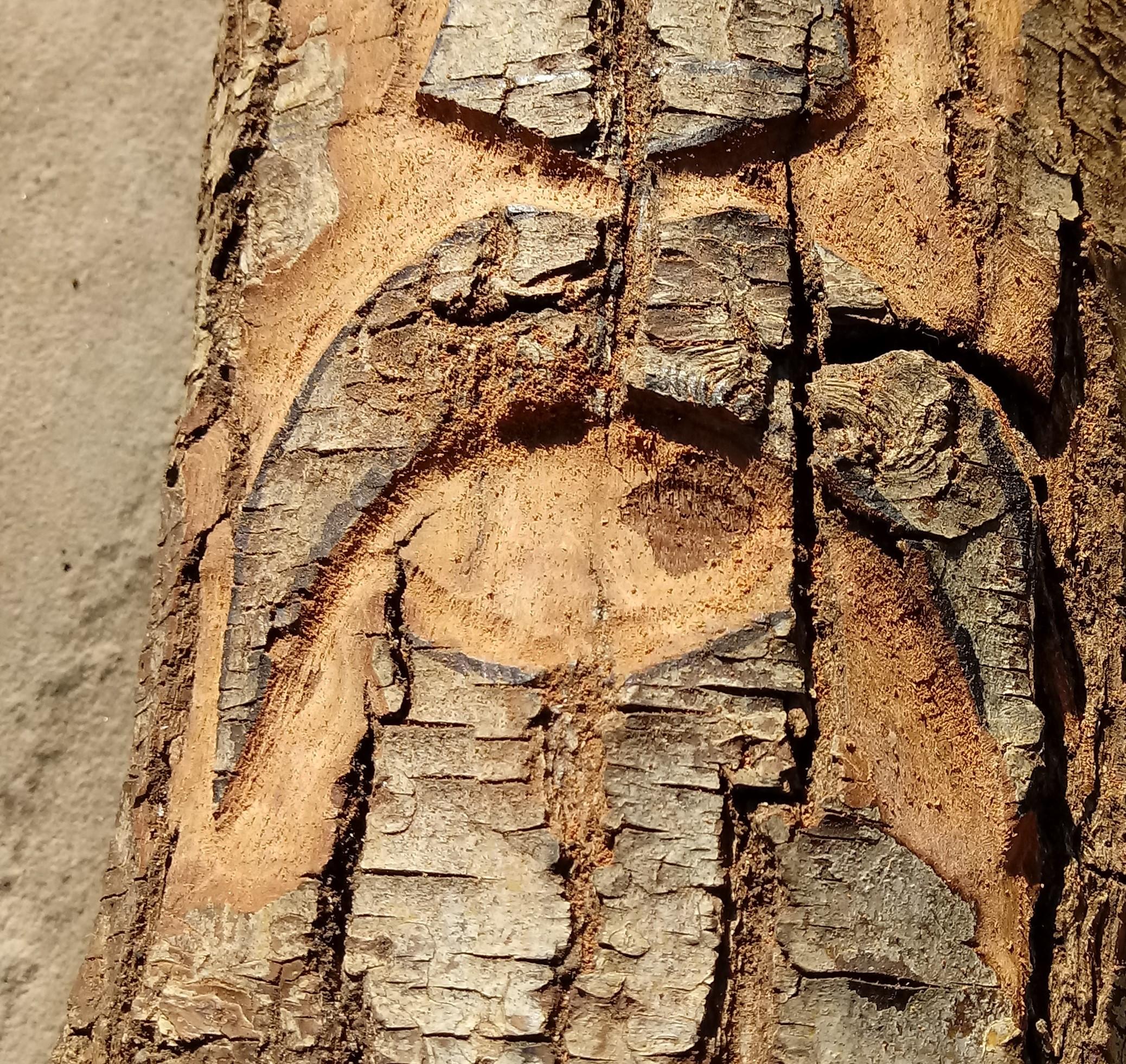.jpg)


The next step is to 'feather away' the wood, by holding the carving burr at an angle to the wood, this will smooth out the transition from the valley to flat wood.
Feather away the wood that is on the outside of the valley you just carved, this will raise the nose out of the face and carve the eyes deeper. Repeat this process all around the face, outside of the lines you just carved into the wood.
Start carving out the inside of the mouth, this will allow you to see what the face will look like with a carved out mouth, and enable you to draw the beard more easily in the next step.
Drawing and Carving the Beard
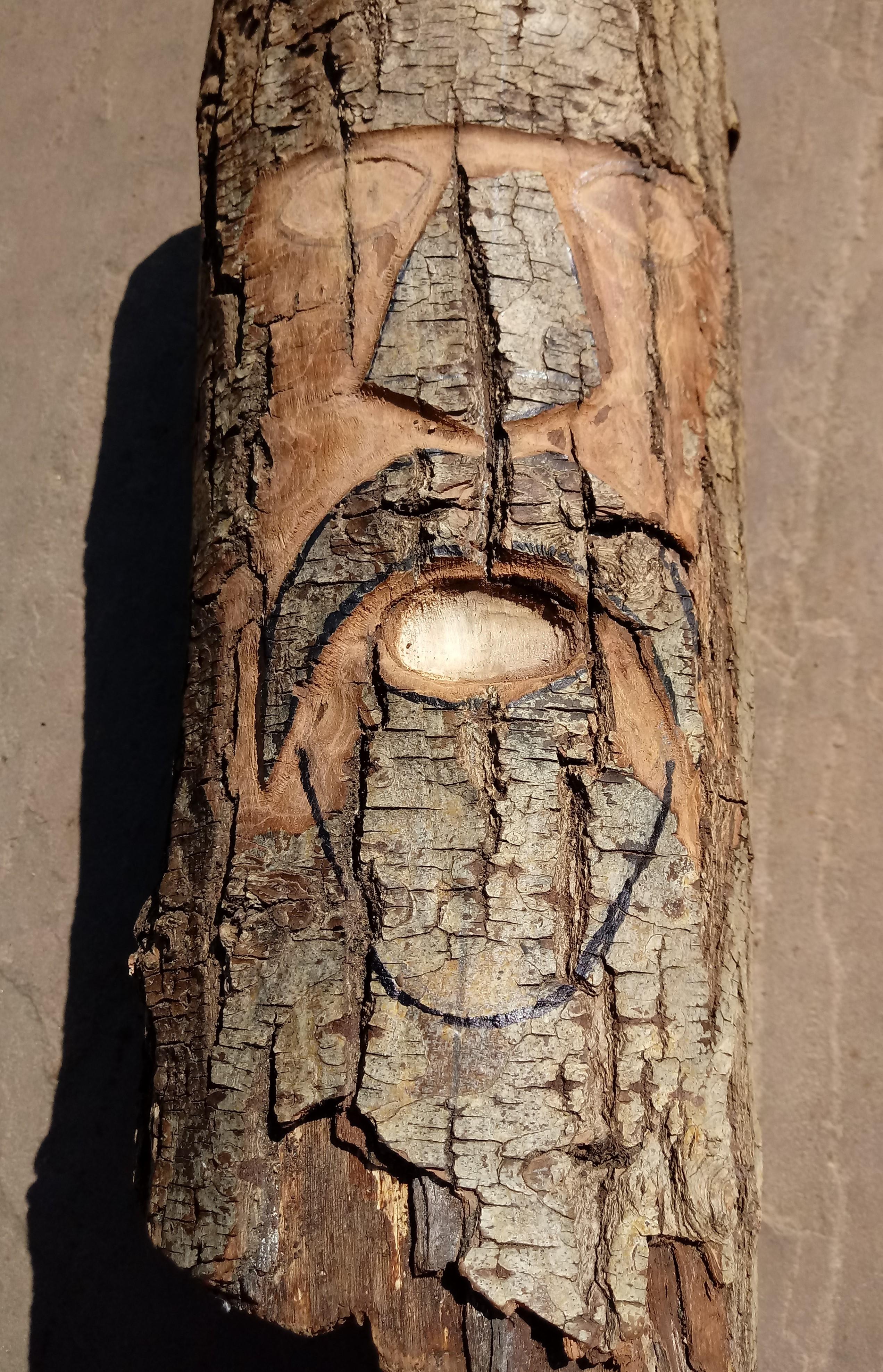.jpg)
.jpg)
.jpg)
.jpg)
Draw on a beard design that you like. I went for a full face style beard, but you can do anything you fancy. I drew the design on first with pencil then went over it with a permanent marker pen to make it easier to see in the pictures and easier to follow while carving.
Carve below the beard and feather away the material around it, this will raise the beard out of the face and make it look like it sticks out.
Drawing and Carving on the Eyes
.jpg)
.jpg)
.jpg)
.jpg)
.jpg)
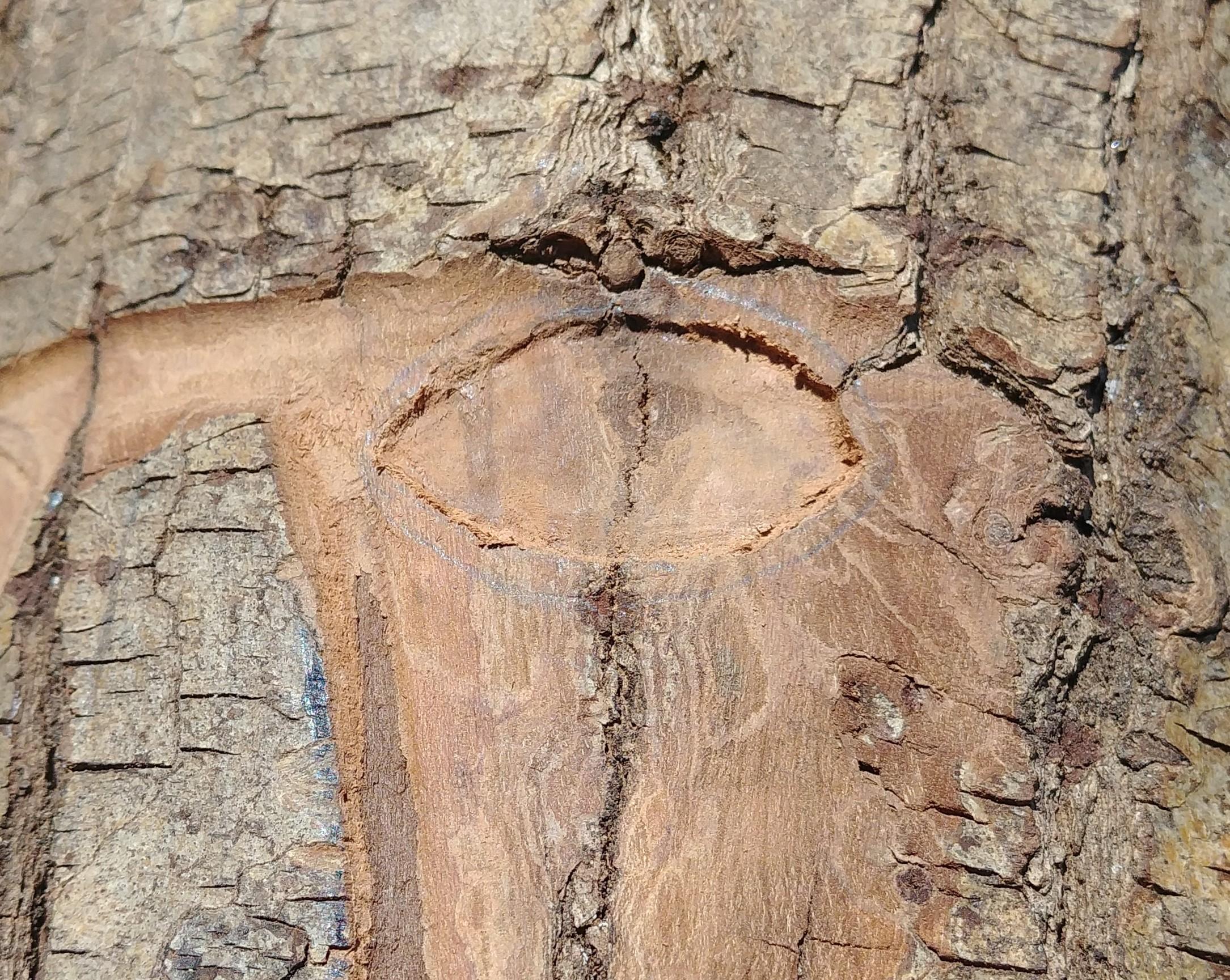.jpg)
.jpg)

Draw on an oval for each eye with a pencil and try to keep them level with each other, you can use a ruler to keep them level. I drew on an outer ring as well, to carve to add detail to it, but I did not carve the outer ring because I wanted this Instructable to be more beginner oriented.
Up until now on the carving I have been using a Kutzall extreme conical burr. Kutzall have a range of different shapes of carving burrs, but it does not really matter what shape you have.
Now you are doing more detailed carving on the eyes it will be easier if you switch to a smaller carving burr. You do not need to do this if you have not got other carving burrs, just the results will not be as neat. When I bought my rotary tool it came with a box of other carving burrs. I switched to a smaller one that is pictured on its own.
When you are carving inside the eye, go deeper at each end to create an eyeball shape that is deeper than the rest of the face. When I carved the eyes, the colour of the wood changed because of the different layers of the wood. This increased the contrast and made them look better.
Adding a Perch


.jpg)
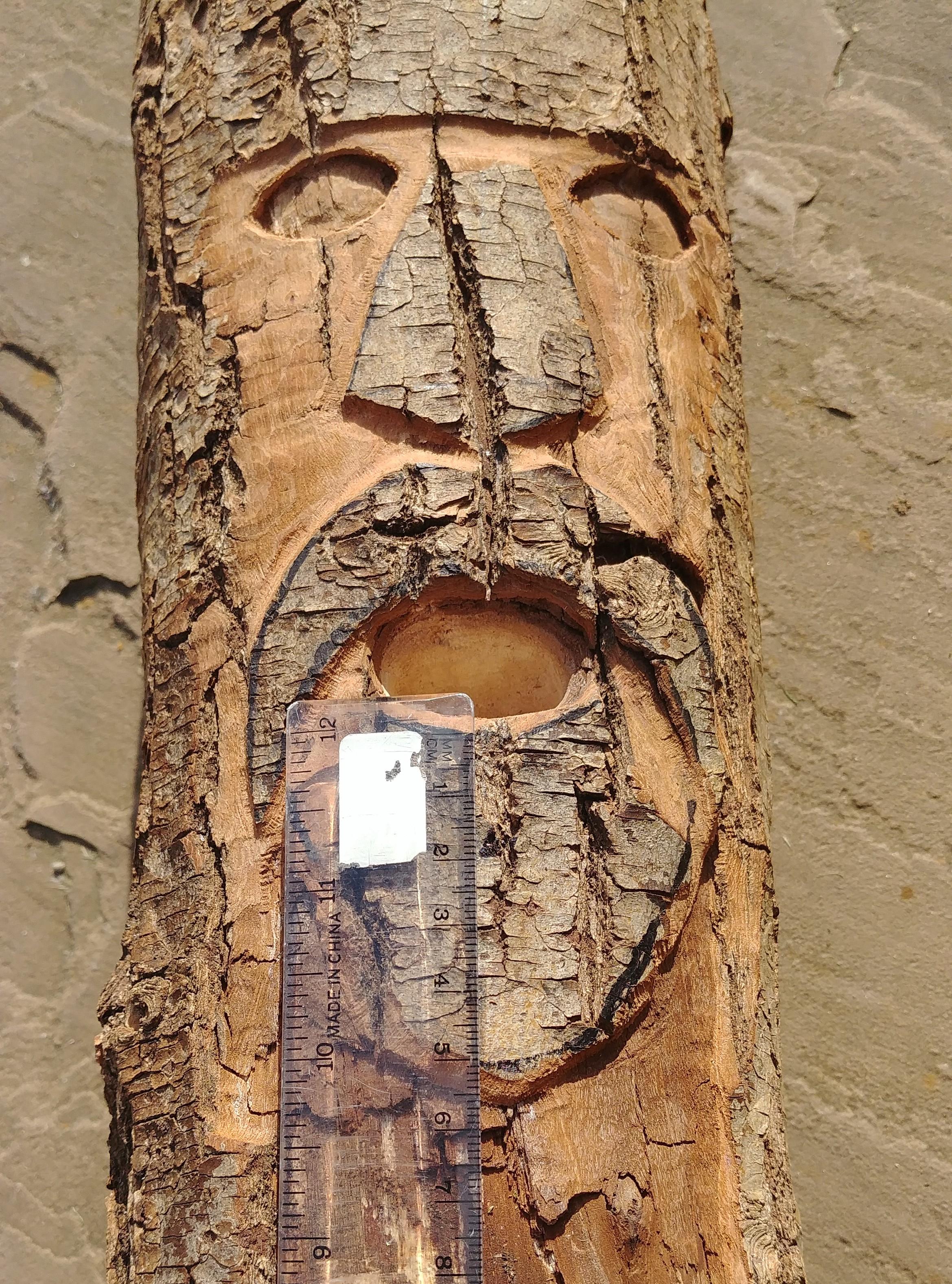.jpg)
.jpg)
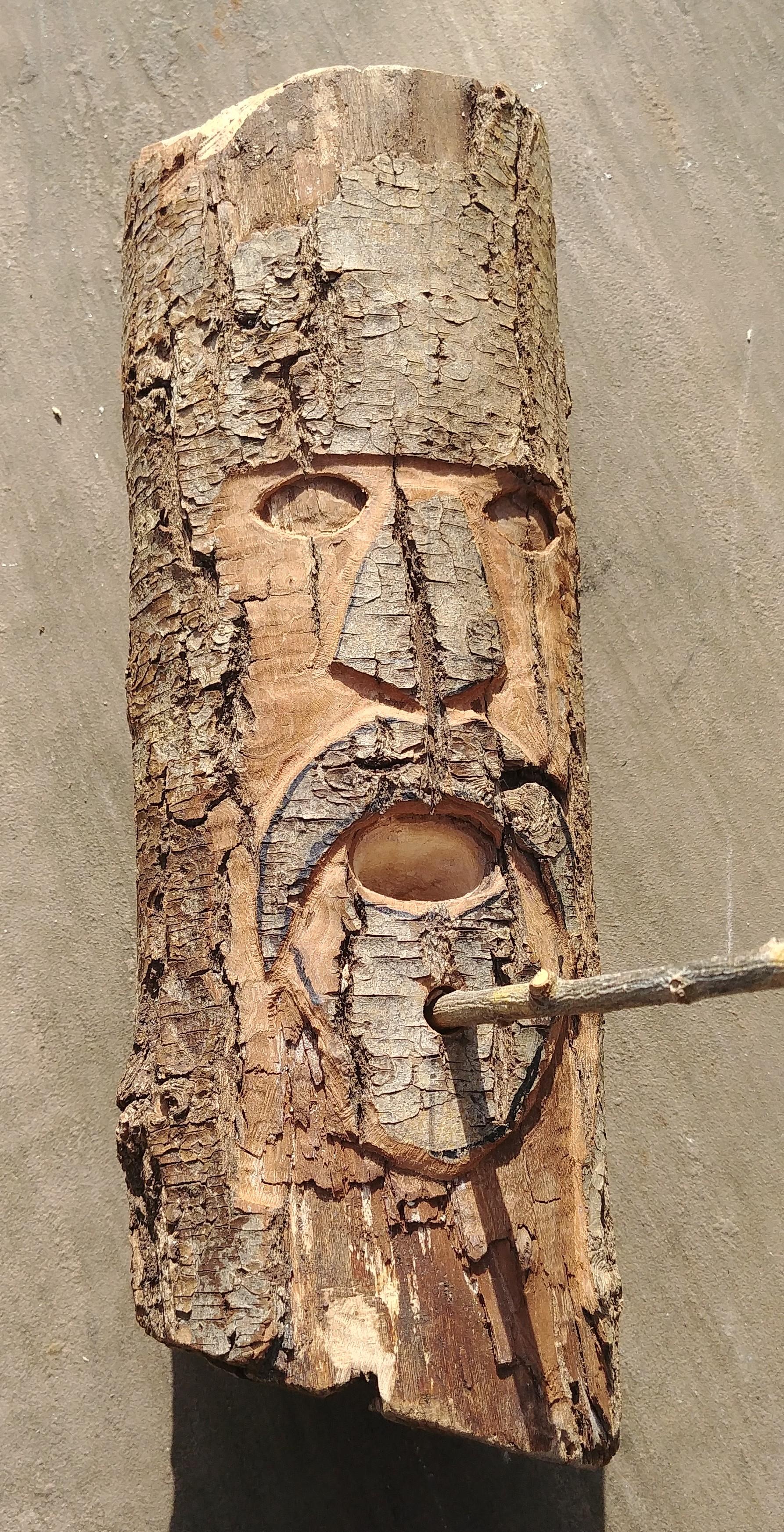.jpg)
.jpg)
.jpg)
I wanted to keep this carving looking natural, so instead of using a dowel I found several sticks and chose the one that looked the right width.
I marked a spot 2cm below the mouth, because I measured the distance between the food hole and the perch of a store bought birdfeeder and it was 2cm.
I found a drill bit that was a little bit larger than the stick I was using for the perch, and drilled a hole that was level to create a level perch.
After inserting the perch stick I snapped it off at the length I wanted for the perch, because snapping the stick rather than cutting it made it look more natural.
Finishing Off the Carving

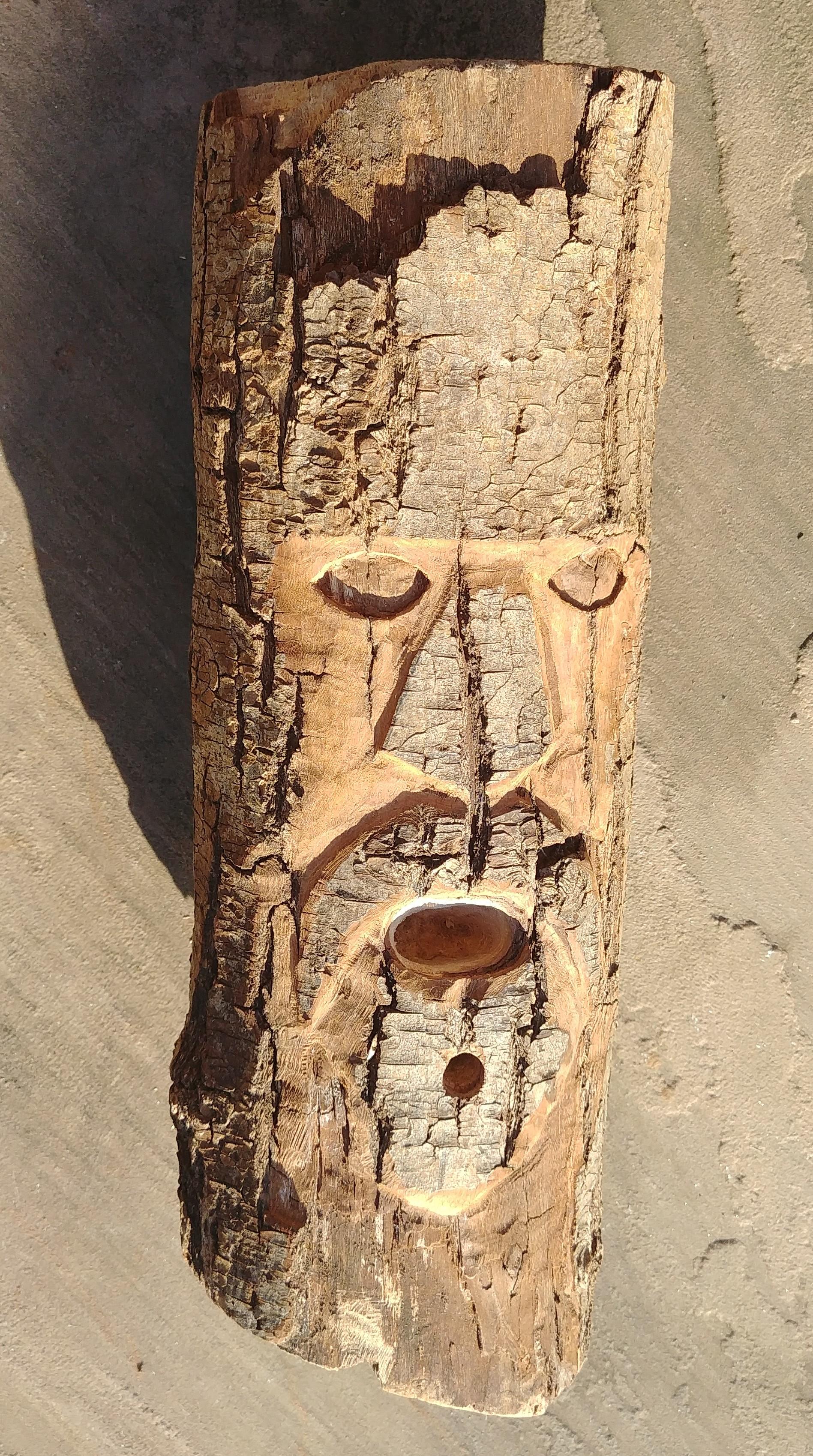.jpg)
I sanded off the lines I had drawn with a marker pen with a marker pen in the end of my rotary tool, and erased the pencil lines, and the carving was finished!
Let the Birds Use Your Carving!



I used dried mealworms for food, but you could use any food, it could be store bought, or home made.
Position the bird feeder in a convenient place for wild birds to use. Do not position it too close to cover like bushes that birds of prey or cats could hide in and prey upon the wild birds using the feeder.
It may take a while for birds to find your feeder, but if you wait a while they will find it and visit it regularly.